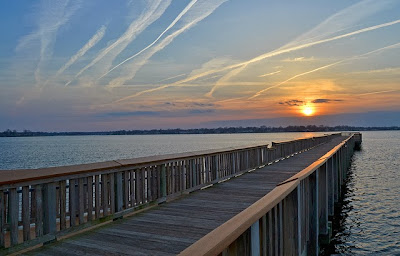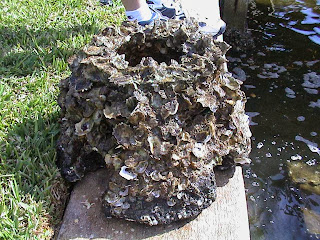 |
| The Bruce Museum Greenwich, Connecticut |
The Long Island Sound’s native Eastern oyster will be the star of a new exhibit opening November 2 at the Bruce Museum in Greenwich, CT.
Visitors can examine the biology and ecology of this common bivalve and compare the Eastern oyster to other species worldwide in the exhibit.
It will feature hands-on interactive displays, videos, photographs and historical objects that will appeal to all ages. You can explore the science and natural history of oysters and discover the rich history of oyster-fishing in the Sound.
As part of the exhibit, the public is invited to experience hands-on oyster fishing with members of the Town of Greenwich Shellfish Commission on Sunday, Nov. 3 from 1:30 to 4 p.m. at the Seaside Center in Greenwich Point Park, Old Greenwich.
A special staff tour of the exhibition will be held for school teachers on Nov. 12 from 3:30 to 5 p.m. Curriculum connections to humanities and science will be highlighted. Reservations can be made by calling 203-413-6741.
The museum will also present a lecture on the Eastern oyster on Nov. 19 at 6:30 p.m. Tickets are $5 for museum members and $7 for non-members. You can make reservations by calling 203-413-6757.
On Dec. 8 from 1 to 4 p.m. Norm Bloom & Son, Best Oysters in Norwalk, will be offering free oyster tasting with museum admission. The oyster exhibit will run through March 23.
The exhibition will explore the science and history of the Eastern oyster in the Sound, examining how its nutritional and commercial values have made the Eastern oyster a popular commodity for residents along the Sound for eons. Native Americans harvested oysters from mile-long natural beds and collected individual oysters that were up to a foot long. By the early 1800s, the natural beds had become depleted and oysters were cultivated on artificial beds.
The oyster industry was a powerful force in the Connecticut coastal economy by the end of the 19th century. However, overfishing, pollution, natural disasters, and disease brought about a decline and the industry was threatened through the early to mid-20th century. In recent years, the oyster trade has experienced resurgence as a result of improved aquaculture techniques and oysters’ popularity among food connoisseurs.
For more information on the exhibit, visit the Bruce Museum online or call 203-413-6740.
The Bruce Museum is located at 1 Museum Drive in Greenwich off Exit 3 of Interstate 95. The museum is open Tuesdays to Saturdays from 10 a.m. to 5 p.m. and Sundays from 1 to 5 p.m. Admission is $7 for adults, $6 for students up to 22 years, $6 for seniors and free for members and children under age 5.
Visitors can examine the biology and ecology of this common bivalve and compare the Eastern oyster to other species worldwide in the exhibit.
It will feature hands-on interactive displays, videos, photographs and historical objects that will appeal to all ages. You can explore the science and natural history of oysters and discover the rich history of oyster-fishing in the Sound.
As part of the exhibit, the public is invited to experience hands-on oyster fishing with members of the Town of Greenwich Shellfish Commission on Sunday, Nov. 3 from 1:30 to 4 p.m. at the Seaside Center in Greenwich Point Park, Old Greenwich.
A special staff tour of the exhibition will be held for school teachers on Nov. 12 from 3:30 to 5 p.m. Curriculum connections to humanities and science will be highlighted. Reservations can be made by calling 203-413-6741.
The museum will also present a lecture on the Eastern oyster on Nov. 19 at 6:30 p.m. Tickets are $5 for museum members and $7 for non-members. You can make reservations by calling 203-413-6757.
On Dec. 8 from 1 to 4 p.m. Norm Bloom & Son, Best Oysters in Norwalk, will be offering free oyster tasting with museum admission. The oyster exhibit will run through March 23.
The exhibition will explore the science and history of the Eastern oyster in the Sound, examining how its nutritional and commercial values have made the Eastern oyster a popular commodity for residents along the Sound for eons. Native Americans harvested oysters from mile-long natural beds and collected individual oysters that were up to a foot long. By the early 1800s, the natural beds had become depleted and oysters were cultivated on artificial beds.
The oyster industry was a powerful force in the Connecticut coastal economy by the end of the 19th century. However, overfishing, pollution, natural disasters, and disease brought about a decline and the industry was threatened through the early to mid-20th century. In recent years, the oyster trade has experienced resurgence as a result of improved aquaculture techniques and oysters’ popularity among food connoisseurs.
For more information on the exhibit, visit the Bruce Museum online or call 203-413-6740.
The Bruce Museum is located at 1 Museum Drive in Greenwich off Exit 3 of Interstate 95. The museum is open Tuesdays to Saturdays from 10 a.m. to 5 p.m. and Sundays from 1 to 5 p.m. Admission is $7 for adults, $6 for students up to 22 years, $6 for seniors and free for members and children under age 5.










